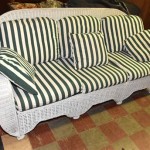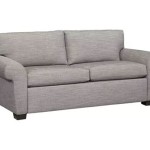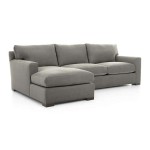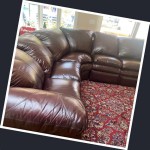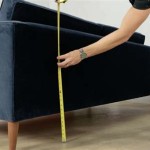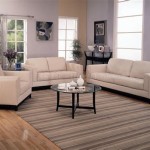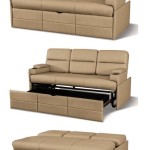How to Attach Sofa Feet: A Comprehensive Guide
Attaching sofa feet might seem like a minor task, but it significantly impacts the stability, aesthetics, and overall lifespan of a sofa. Whether replacing old, damaged feet or adding new ones to elevate the furniture, understanding the correct procedures and considerations is crucial. This article provides a detailed guide on how to attach sofa feet, covering various types of feet, necessary tools, and step-by-step instructions for a successful and secure installation.
Understanding Different Types of Sofa Feet and Attachment Methods
Before initiating the attachment process, it is essential to identify the type of sofa feet being installed and the corresponding attachment method. Sofa feet are available in various materials, including wood, metal, and plastic. Each material offers different aesthetic and functional properties. Wood feet provide a classic and warm appearance, while metal feet offer a more contemporary and durable option. Plastic feet are often used for affordability and practicality.
The attachment method largely depends on the sofa's frame construction. Common attachment methods include:
* Bolt-on: This method involves using bolts that screw directly into threaded inserts pre-installed in the sofa frame or into T-nuts that are hammered into the frame base. This is a highly secure and common method, especially for heavier sofas. * Screw-on: Screw-on feet are attached using wood screws that are driven directly into the wooden frame of the sofa. This method is suitable for lighter sofas and feet where the wood frame is substantial enough to hold the screws securely. * Plate-mounted: These feet come with a mounting plate that is screwed onto the bottom of the sofa frame. The feet then attach to the mounting plate, allowing for easy replacement or adjustment. This method distributes the weight more evenly. * Adhesive: While less common and generally not recommended for long-term stability, adhesive feet are sometimes used for lightweight sofas or temporary solutions. The success of this method depends heavily on the adhesive quality and the surface preparation.Identifying the attachment method will determine the necessary tools and the steps involved in securing the feet to the sofa.
Gathering Necessary Tools and Materials
Proper preparation is essential for a successful sofa feet attachment. Having the right tools and materials readily available streamlines the process and minimizes potential complications. Here is a list of essential items:
* Sofa Feet: Ensure the new feet are compatible with the sofa's frame and the desired aesthetic. Verify that all necessary hardware (bolts, screws, mounting plates) are included. * Drill/Screwdriver: A power drill with various screwdriver bits is crucial for most attachment methods. A manual screwdriver can be used, but a drill significantly reduces effort and time. * Measuring Tape/Ruler: Accurate measurements are necessary to ensure the feet are evenly spaced and properly aligned. * Pencil/Marker: Used for marking the positions for drilling pilot holes or aligning mounting plates. * Pilot Drill Bit: If drilling pilot holes for screws, select a drill bit slightly smaller than the screw diameter to prevent splitting the wood. * Wrench/Pliers: For bolt-on feet, a wrench or pliers might be needed to tighten the bolts securely. * Hammer: If using T-nuts, a hammer is required to drive them into the sofa frame. * Level: A level is essential to ensure the sofa stands evenly on all feet, preventing wobbling. * Safety Glasses: Protects the eyes from dust and debris during drilling and hammering. * Work Gloves: Improves grip and protects hands during the installation process. * Fabric or Cardboard (Optional): Placing fabric or cardboard under the sofa during the process can protect the flooring.Having these tools and materials prepared before starting ensures a smooth and efficient attachment process.
Step-by-Step Instructions for Attaching Sofa Feet
The specific steps for attaching sofa feet will vary depending on the type of feet and the chosen attachment method. However, the following general instructions provide a comprehensive guide for most scenarios.
Step 1: Preparation and Inspection
Begin by turning the sofa upside down, ensuring it is placed on a protected surface to avoid scratching the upholstery. Inspect the bottom of the sofa frame to identify any existing hardware or markings that might indicate where the previous feet were attached. Clean the area where the new feet will be attached to remove any dust, debris, or old adhesive residue. This ensures a clean and secure connection.
Step 2: Marking the Attachment Points
Accurately mark the desired positions for the new sofa feet. Use a measuring tape or ruler to ensure that the feet are evenly spaced and aligned. Consider the structural integrity of the sofa frame when choosing the attachment points. Avoid attaching feet to areas that are weak or damaged. If using a mounting plate, position the plate and mark the locations for the screw holes.
Step 3: Pre-Drilling Pilot Holes (If Necessary)
For screw-on feet or mounting plates, drilling pilot holes is highly recommended, especially when working with hardwood frames. Use a pilot drill bit that is slightly smaller than the diameter of the screws. Drill the pilot holes at the marked locations, ensuring that the holes are deep enough to accommodate the screws without splitting the wood. Pilot holes provide a guide for the screws, making them easier to install and preventing damage to the wood frame.
Step 4: Attaching the Feet or Mounting Plates
If using screw-on feet, align the feet with the pilot holes and drive the screws in using a screwdriver or drill. Ensure that the screws are tightened securely, but avoid over-tightening, which could strip the screws or damage the wood. If using mounting plates, align the plates with the marked locations and attach them to the sofa frame using screws. Again, ensure that the screws are tightened securely but not over-tightened.
For bolt-on feet, align the feet with the threaded inserts or pre-drilled holes in the sofa frame. Insert the bolts and tighten them using a wrench or pliers. Ensure that the bolts are tightened securely to provide a stable and secure connection. If using T-nuts, position the T-nuts over the marked locations and use a hammer to drive them into the sofa frame. Ensure that the T-nuts are flush with the surface of the wood before attaching the feet with bolts.
Step 5: Ensuring Stability and Alignment
After attaching all the feet, carefully turn the sofa upright. Use a level to check that the sofa stands evenly on all feet. If the sofa wobbles, adjust the feet as needed. For screw-on feet, slightly loosening or tightening the screws can often correct minor imbalances. For bolt-on feet, adjusting the tightness of the bolts can achieve the same result.
If the sofa remains uneven, consider using furniture shims under the feet to compensate for uneven flooring. Furniture shims are thin pieces of wood or plastic that can be inserted under the feet to raise them slightly. Experiment with different shim placements until the sofa is level and stable.
Troubleshooting Common Issues
Despite careful preparation and execution, certain issues might arise during the sofa feet attachment process. Here are some common problems and their solutions:
* Stripped Screws: If a screw strips the wood, resulting in a loose connection, try using a longer or thicker screw. Alternatively, insert a wooden dowel into the stripped hole, break it off flush with the surface, and then drive the screw into the dowel. * Wobbly Sofa: If the sofa wobbles after attaching the feet, it could be due to uneven flooring or improperly aligned feet. Use a level to identify the low corner and adjust the feet or add furniture shims as needed. * Difficult Screw Installation: If screws are difficult to drive into the wood, ensure that you are using the correct size screwdriver bit and applying sufficient pressure. Pre-drilling pilot holes can also alleviate this issue. * Damaged Sofa Frame: If the sofa frame is damaged or weak, reinforce it with additional wood or metal supports before attaching the feet. This will provide a more stable and secure connection. * Incorrect Foot Size: If the new feet are too short or too tall, they can negatively impact the sofa's appearance and comfort. Ensure that the new feet are the correct size before beginning the installation process. If the feet are too short, consider using furniture risers to elevate the sofa to the desired height.Addressing these potential issues promptly can ensure a successful and satisfactory outcome.

Diy Affordable Sofa Makeover How To Replace Legs Livingroommakeover Homedecor

How To Attach Sofa Legs A Step By Living Spaces

How To Attach Sofa Legs A Step By Living Spaces

How To Attach Sofa Legs A Step By Living Spaces

8 Easy Ways To Attach Furniture Feet Tablelegs

How To Install Couch Legs

How To Install Taller Sofa Feet Easy Diy Guide For Comfort

How To Replace Couch Legs Maison De Pax

8 Easy Ways To Attach Furniture Feet Tablelegs

How To Replace Couch Legs Maison De Pax

